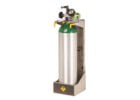Federal Emergency Services Grants/Funds
Last month, the Federal Government passed the Consolidated Fiscal Year 2019 Appropriations Act. This Act combined several different bills into one spending bill for the Federal Government. It is essential that we in emergency services maintain a knowledge of the Federal Appropriations bills/laws due to the fact that many grants originate at the federal level for emergency services. There are several pieces of this legislation that apply directly to us in our services.
AFG and SAFER
Two programs are familiar to most of us, either through our own application for the grants or because we know others who have made an application. These are the Assistance to Firefighters Grant (AFG) and the Staffing for Adequate Fire and Emergency Response (SAFER) Grant. These two grant programs are funded for 2019 at the same level as 2018, which is $700 million, split evenly between them. For these grant programs to be held at an even level is a tremendous success. These programs are different in their focus so let us take each of these separately for further discussion.
The AFG was originated in 2001 to aid fire departments and other first responders in obtaining needed personal protective equipment such as self-contained breathing apparatus (SCBA), turnout gear, emergency vehicles, and training. To be eligible, you must be a fire department or non-affiliated emergency medical services agency. The grant is normally announced in the last half of the calendar year with a Notice of Funding Opportunity. This document is vital and gives you the deadlines, requirements, and all other vital information in applying for the AFG. Through the AFG website, FEMA releases a load of extra information such as an application checklist and assistance with the narratives for this grant. A huge piece of information they release is a listing of their priorities. These are the areas they want to fund for that current year. Items that the AFG have historically funded are turnout gear, SCBA, training, and on occasion, new emergency vehicles.
The SAFER Grant was created to aid localities in recruitment and retention of personnel. Mainly they are focusing on trained front line firefighters. FEMA is aiming to assist in agencies meeting the National Fire Protection Association’s 1710 (Standard for the Organization and Deployment of Fire Suppression Operations, Emergency Medical Operations, and Special Operations to the Public by Career Fire Departments) and 1720 (Standard for the Organization and Deployment of Fire Suppression Operations, Emergency Medical Operations, and Special Operations to the Public by Volunteer Fire Departments). Normally this grant is announced in the first few months of the calendar year, also with a Notice of Funding Opportunity. Their website provides lots of information including webinars that assist in various ways. The SAFER Grant has been used for hiring of personnel, recruitment and retention programs such as creating videos and other technological releases to aid in recruitment, and funding to attract volunteers.
The best thing you can do in order to stay informed with the AFG and the SAFER Grant, since the dates change, is to be on FEMA’s email listserv. You can register your email address to receive regular updates that include funding information on the AFG and SAFER Grants by visiting https://www.fema.gov/email.
United States Fire Administration
The United States Fire Administration was funded at $42.9 million dollars in 2018. For 2019, Congress allocated $44.179 million dollars for the USFA. This is a rather large increase that we need to recognize. This gives the USFA approximately $2 million dollars more to operate and fund their projects which have a direct impact on us in the fire service. In addition to their operational budget mentioned above, the USFA will receive $1.5 million for infrastructure improvements for the National Fire Academy in Emmitsburg, Maryland. This is also very vital as this is our federal “office” that provides a lot for the localities including training that can be taken at the NFA directly. This is a total increase of about $4 million dollars overall. It is highly encouraged that you take full advantage of all that the NFA has to offer from their online services to their training on site. Let your elected representatives see how much you appreciate their funding the USFA by increasing their numbers in every aspect.
Homeland Security Grant Program
The Homeland Security Grant Program is made up of three different grants. These are:
- State Homeland Security Program (SHSP)
- Urban Area Security Initiative (UASI)
- Operation Stone Garden (OSG- Law Enforcement based grant)
The SHSP is focused on improving homeland security initiatives for state, local, and tribal agencies. The program wants to reduce gaps in core capabilities as related mostly to terrorism. Congress allocated $525 million dollars for this program which is an increase of approximately $18 million dollars. This grant is only open to states, but local and tribal agencies can be subrecipients of the funding through the state government.
The UASI program is meant to support high density areas that are at a high risk and high impact for terrorism type events. The goal is to aid in preparedness, mitigation, response, and recovery. This program sees an increase of $10 million for this fiscal year for a total of $640 million dollars. This program is also open only to states, but with local and tribal agencies eligible as subrecipients.
The OSG program is a law enforcement only program and therefore will not be discussed here.
If you are a locality and are interested in researching if you can be a subrecipient of one of these two programs under the Homeland Security Grant Program, contact your local Homeland Security/Emergency Management agency as they can assist you in determining your eligibility and assist further.
Tips for Federal Grants
There are several tips when applying for federal grants that can aid you in terms of being prepared to submit and to be more competitive.
First, make sure you have all the proper numbers and registrations you need. Ensure that you have the following numbers at a minimum:
- Data Universal Numbering System (DUNS)
- Employer Identification Number (FEID)
- System for Award Management Registration (ensure it is updated)
- gov Registration (ensure it is updated)
These numbers and registrations can often take time to obtain. With timeframes of a month or so when grants like the AFG are announced and due, this is something you should do now.
Be prepared with statistics. Use statistics to show your need for the request. These statistics can be run numbers, time information from a computer aided dispatch system, and other National Fire Incident Reporting System (NFIRS) data. Do not just say ‘I want’. Show them why you need it.
Ensure that your narratives are well thought out and prepared. You should have them reviewed several times to ensure there are no grammatical or spelling errors. Also make sure that everything flows in terms of when you read it. Take advantage of computer programs that will allow the narrative to be read back to you and see if there are errors or if the narrative does not flow.
Finally, do not wait until the last minute. Prepare, prepare, prepare. Each of these grant programs will come open within twelve months from now at the longest. Work on stuff now so you can be ready to go once the email comes out that the grant is open.
Conclusion
Overall it seems that emergency services had a win this year for funding for federal grants and programs. We need to use every option we have when it comes to these grant programs and funding of programs like the NFA so we can assist them in justifying their need of funding which aids us. Good luck in your pursuit of grants!















